Elizabeth T. Daly was an American writer of mystery novels whose main character, Henry Gamadge, was a bookish author, bibliophile, and amateur detective. A writer of light verse and prose for Life, Puck, and Scribner's magazines in her earlier years, Daly published her first Gamadge novel, Unexpected Night, at age 60. Between 1940 and 1951, she published 16 novels featuring Gamadge.
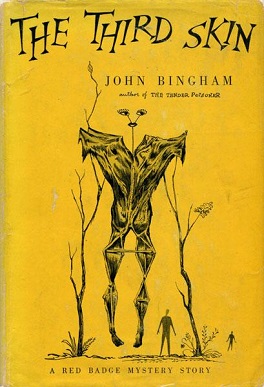
The Third Skin is a 1954 thriller novel by the British writer John Bingham. It was released in the United States three years later in 1957, published by Dodd Mead with an alternative title Murder Is a Witch.

Murder Off the Record is a 1957 thriller novel by the British writer John Bingham. It is also known by the alternative title Marilyn.

A Nice Cup of Tea is a 1950 mystery thriller novel by the British writer Anthony Gilbert. It was published in the United States under the alternative title The Wrong Body. It is the twenty fourth in the long-running series featuring the unscrupulous lawyer and detective Arthur Crook.

The High Sheriff is a 1937 mystery detective novel by the British writer Henry Wade. Wade was a writer of the Golden Age of Detective Fiction, best known for his series featuring Inspector Poole. This was one of a number of stand-alone novels he wrote, structured as a partially inverted detective story.

The Twenty-Third Man is a 1957 mystery detective novel by the British writer Gladys Mitchell. It is the thirtieth in the long-running series of books featuring Mitchell's best known creation, the psychoanalyst and amateur detective Mrs Bradley.

Sorry You've Been Troubled is a 1942 thriller novel by the British writer Peter Cheyney. It was the fifth book in his series featuring the hardboiled London-based private detective Slim Callaghan. It was published in the United States under the alternative title of Farewell to the Admiral.

Reputation for a Song is a 1952 crime novel by the British writer Edward Grierson. It is an inverted detective story, breaking with many of the traditions of the established Golden Age of Detective Fiction. A young man is placed on trial accused of murdering his father. Its conclusion rests on interpretations of the presumption of innocence.

The Litmore Snatch is a 1957 detective thriller novel by the British writer Henry Wade. It was his final novel. Like much of Wade's work it takes the form of a standard police procedural. A review in The Guardian by fellow crime writer Anthony Berkeley considered the "book is a quiet and almost factual account of the police procedure following the kidnapping of a small boy for ransom, and personally I found it fascinating"

Jacob's Ladder is a 1921 thriller novel by the British writer E. Phillips Oppenheim. Oppenheim was prolific, bestselling author whose popularity reached its height during the interwar years. The novel was published in America by Little, Brown.

The Cask is a 1920 detective novel by the Irish-born writer Freeman Wills Crofts. His debut novel, it is considered his masterpiece. Long after the author's reputation had declined, this book was still hailed by critics as a cornerstone of the genre Crofts had been working as a railway engineer before writing the novel, but its success launched him as one of the leading writers of the Golden Age of Detective Fiction. He later went on to create the character of Inspector French of Scotland Yard who appeared in a long-running series of novels.

The Luck of the Vails is a 1901 mystery crime novel by the British writer E. F. Benson, later better known as the author of the Mapp and Lucia series. It was one of only two ventures he made into the genre during his prolific career along with The Blotting Book (1908). In his autobiography Benson numbered it as one of only four of his novels he was satisfied with.
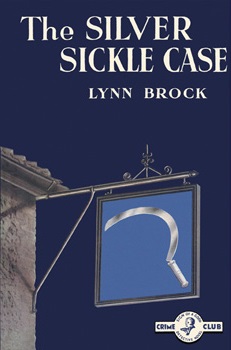
The Silver Sickle Case is a 1938 detective novel by the Irish-born writer Lynn Brock. Best known for his Colonel Gore series of mysteries, the novel introduced an alternative detective character Sergeant Venn of Scotland Yard assisted by Detective Constable Kither. It was followed by two sequels.
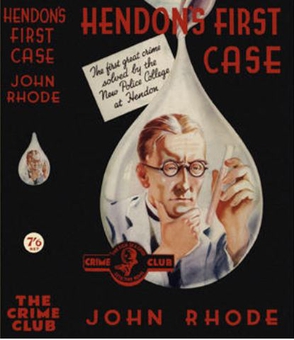
Hendon's First Case is a 1935 detective novel by John Rhode, the pen name of the British writer Cecil Street. It is the twenty first in his long-running series of novels featuring Lancelot Priestley, a Golden Age armchair detective. The novel introduced the character Inspector Jimmy Waghorn, a graduate of the newly established Hendon Police College. Over time Waghorn would increasingly become a central figure in the series.
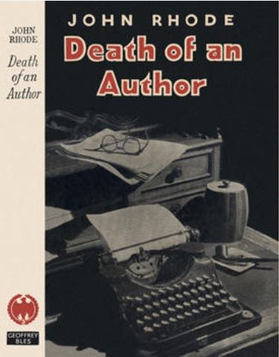
Death of an Author is a 1947 detective novel by John Rhode, the pen name of the British writer Cecil Street. It is the forty fifth in his long-running series of novels featuring Lancelot Priestley, a Golden Age armchair detective. The New Yorker described it as "Rather pleasant, in a ponderous fashion" while Will Cuppy, writing in the New York Herald Tribune, felt "Mr. Rhode provides one of those satisfying British stories in the old tradition, full of mystery meat and brain-work."
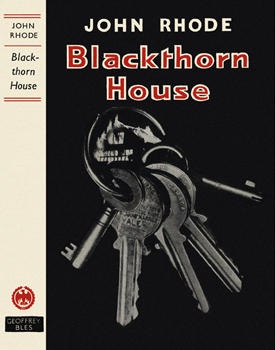
Blackthorn House is a 1949 detective novel by John Rhode, the pen name of the British writer Cecil Street. It is the forty eighth in his long-running series of novels featuring Lancelot Priestley, a Golden Age armchair detective.

Anything to Declare? is a 1957 detective novel by Freeman Wills Crofts. It is the twenty ninth and final entry in his series of novels featuring Inspector French, a prominent figure of the Golden Age of Detective Fiction. The author had been in poor health for much of the decade, and struggled to finish this book which was published a few weeks before his death.

They Watched by Night is a 1941 detective novel by John Rhode, the pen name of the British writer Cecil Street. It is the thirty fifth in his long-running series of novels featuring Lancelot Priestley, a Golden Age armchair detective. It was published in the United States by Dodd Mead with the alternative title Signal for Death.
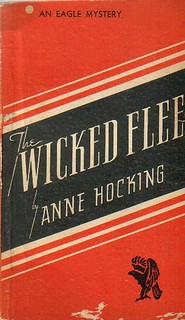
The Wicked Flee is a 1940 mystery crime novel by the British writer Anne Hocking. It was the second novel in a long-running series featuring her detective character Chief Inspector William Austen of Scotland Yard.

Tragedy at Law is a 1942 mystery detective novel by the British author Cyril Hare. It is the first of five novels featuring the lawyer Francis Pettigrew, an amateur detective. It also features Inspector Mallet of Scotland Yard who had appeared in three previous novels by Hare and would return in two further Pettigrew novels. It takes place over a period of several months from September 1939, shortly after the outbreak of the Second World War, to April 1940. It has been considered as Hare's finest book.



















